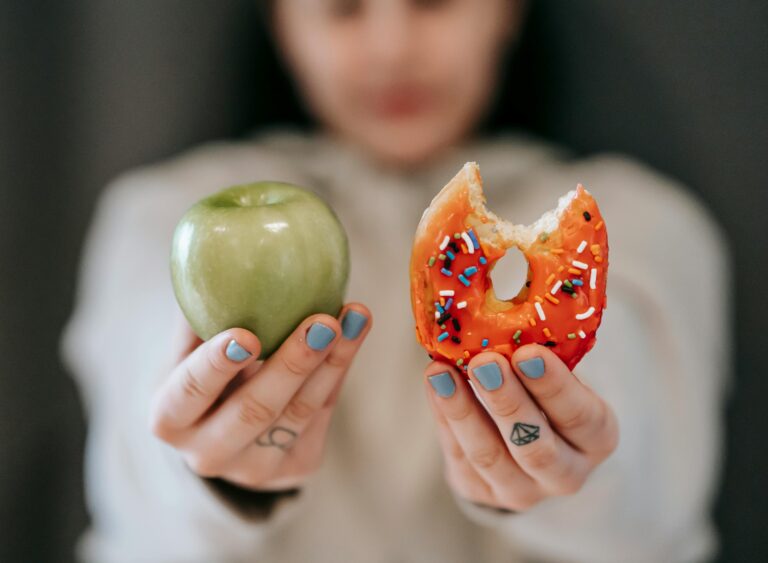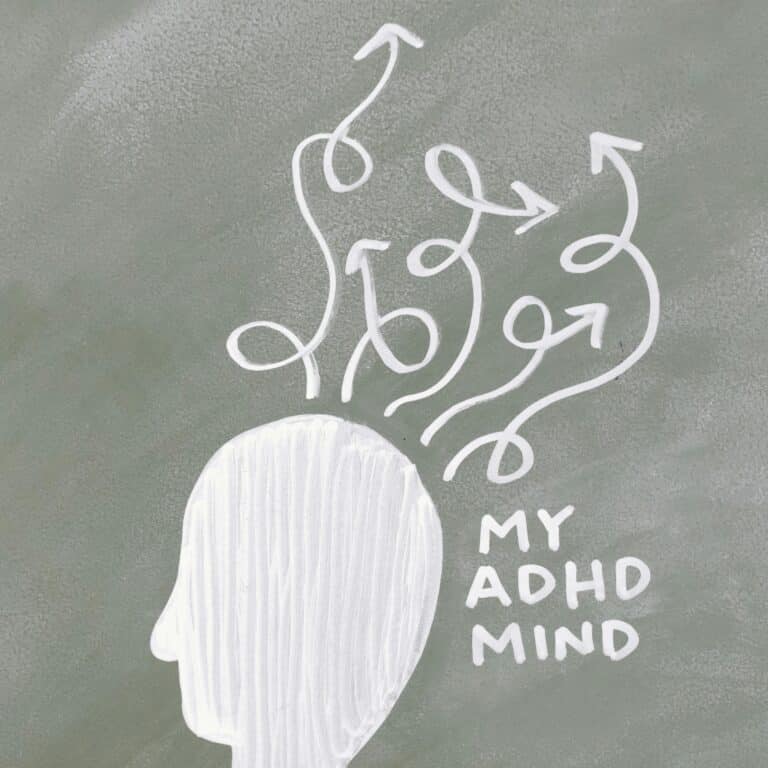If you tried decluttering at all, you are probably familiar with the famous technique “Set your timer for 15 minutes and go!”
It works for a variety of reasons. One of them is that it lowers the bar for beginning, and sets a doable goal. Another is that it gives you a corrected timeframe — if you are time-blind, you can feel like the tasks you can do in 15 minutes take an hour, so you may be pleasantly surprised by how short a time it really takes. Yet another advantage can be that it gives you a deadline, allowing you to race against the clock, making it into a competition with yourself.
If you have read the amazing book How to Keep House While Drowning, you also know of the importance of not shaming yourself because of clutter or mess. While clean and uncluttered space is important to our mental health, the way we speak to ourselves in the privacy of our heads is much more important. You can undertake the work of making your space more livable, but never at the cost of kindness to yourself.
So, these are some of the well-known things about decluttering. But there are some counterintuitive ways to think about it that can help you too. I discovered them during my own decluttering journey. These were really AHA moments for me. I hope they are as useful to you as they are to me!
1. How much would you pay to have a nice, clean space?
I have realized one thing while deciding what to throw away:
I used to be poor. I saved EVERYTHING. Even a shoebox was valuable because I could use it to organize stuff. And now I’m poor again. (And yes, I still save shoeboxes. Don’t judge.)
So I save all kinds of stuff — unwanted gifts, toiletries, bed sheets — because I always imagine how much money it would cost to replace it if I needed it in the future.
I was very averse to getting rid of stuff that could be useful one day.
Today I asked myself: But how much money would I pay to have a clean space?
Total gamechanger. It allows me to give and throw away things without guilt.
Also: I always happen to need something I have thrown away. This helps to confirm for my brain that I mustn’t throw away anything that could be of use. But when I really think about it, I tend to need one small thing out of a box full of other things that I never ever use. So it really IS easier to just buy that one thing in the future if I happen to need it, if its price is lower than what I would pay to have a nice, clean home.
2. Don’t make it urgent (if you are a procrastinator)
I have just discovered a critical flaw in my decluttering reasoning.
When I clean or declutter, I put stuff in places to be processed urgently — for example, I put a plastic storage bag I need to wash in my bathtub. To free my bathtub, I need to wash it.
Well, do you think I can process urgent or nonurgent tasks more quickly? Yep, the non-urgent ones are done much more easily.
I just realized that when I make something urgent, I feel like I should have already done it — therefore it’s like starting from a place of “debt”, getting emotionally from a negative value to zero by completing the task. It’s like the thing screams at me: “You should have already cleaned this!” And when I finish the task, I get no dopamine, because I already imagined it done in my head. It should have been, according to my brain.
The non-urgent tasks feel like starting from zero and getting to a positive value, giving me a better feeling (and that delicious dopamine).
It’s not actually procrastination, it’s logic! 😃
3. Don’t plan ahead (if you have this kind of brain)
The same happens when I make plans to declutter/organize/clean something. Just by the act of planning it, my brain begins to count it as already done.
So I decided not to have plans set in stone. I DO have an idea what needs to be done, that is absolutely a necessary step. I’m very much aware of all the areas and things that need to be decluttered. (If you don’t, writing down a list is the way to start. You just don’t have to plan ahead of time what items you will cross off the list today.)
Then, when I have the energy to make some decluttering progress, I either attack what is at hand or have a good look at what would clear the most space. It depends on the level of my executive functioning that day.
For some people, decluttering schedules and such things work splendidly, but I’m clearly the opposite.
Maybe you are too.
4. Decide what to keep
If you are like me, there are probably some categories of things that are vital to your emotional well-being. I went mostly without them while I lived in the college dorm and I missed them a lot! I decided to write them down and then acknowledge I won’t declutter these things, or if I do, only the minimum amount. You can do that too. You get to keep those, so you need to make space by decluttering other stuff. This can give you additional motivation for decluttering!
Write down 1–5 categories of things that are most important for you to keep, in descending order. For me, those are:
1. My handwritten notes. I would hate to lose my thoughts, short stories, poems, dreams I have written down, articles in making… (I have learned to throw the handwritten text away when it’s already on my blog though.)
2. The most important of my sentimental objects. My diary from when I was a kid, my granddad’s camera, and my grandma’s radio, the mementos I have of them. Several select items my friends gave me that made me feel loved.
(This is also the most “dangerous” category because I’m a sentimental hoarder who assigns emotional value to just about everything just because it existed with me during some time in the past. I need to decide carefully on what is really important and what I can let go of without regret.)
4. My books. I’m very much comforted by the physical presence of books, even if I read mostly on my Kindle or iPad.
5. Craft supplies. They are crazy expensive and even if I don’t do the craft they are for at the moment, I like to think I will do it in the future. I like having them at hand. (But be aware that this is a dangerous territory, as collecting craft supplies is a whole hobby too!)
By assigning the categories numbers of importance, I know what I need to prioritize and where there is a bit of room to give. I will probably always keep the items from the first category. If I ever need to declutter more, I will start with the lowest number, 4. I could even think about getting rid of SOME of the books if I absolutely must (even if it very much goes against my bookworm nature).
But — and this is a big but — make the categories narrow. I no longer include every single thing I have ever written by hand in the first category, only the stuff that is actually important to me. I had to learn this and it took some time. I no longer consider everything from my past an important memento as well. It is ongoing work, so you may want to reassess every once in a while.
When you have already decided on the things you are going to keep, think about ways to organize them so they look neat and you can always know where you can find what you are looking for.
5. Sentimental stuff -make it specific
First, try to put all of your sentimental objects in one place, so you can see exactly how many of them you have and can decide on the most important ones. If you can’t do that, do it in batches. The place where you keep those objects may also give you a clue (for example, I have some sentimental objects in my flat, and some in my basement — so just from that I can tell those in my flat are more important to me.)
Here is a way to decide which ones of your things to keep and which ones to throw away. When in doubt, express how important the thing is to you on a scale from 0–10. Do it quickly, without thinking — just go with the first number that popped into your mind. Your subconscious is quite clever about things like this.
Then, keep only things that you have assigned a value of 7 or more.
Put them in one pile and all of the others in another (preferably in a box with a lid, so you won’t keep looking at them and reassessing. If you have a willing family member, you can ask them to dispose of them for you afterward, so you don’t have to do it yourself. If you have a hard time letting them go, you can take photos of them so you have the mementos in digital form.)
You can adjust this limiting number according to how many of your sentimental objects you want to keep. (Establish this before you start going through them.) If you have assigned the value of seven or more to half of them, but you want to keep less than that, you need to move the limit up to 8 or even 9. Hardcore minimalists may go with 10. (But I have the feeling that if you or I were hardcore minimalists, I wouldn’t be writing and you wouldn’t be reading this article.)
This is a much more comprehensive way for me than Marie Kondo’s “Does it spark joy?” (Because what if it gives me joy, but also guilt from keeping it? What if it gave me joy in the past and I want to remember that joy by seeing this object? How much joy do I exactly need to feel to keep this? Is this joy, or other emotion? How do I know if I feel joy? WHAT EVEN IS JOY? My neurokin can probably relate. 😃)
I hope these tips and insights help you as much as they have helped me. Do you have any decluttering tips? Share them in the comments!

Do you want more decluttering tips? I’m writing a decluttering ebook! Join my e-mail list to get notified when it comes out! And in the meantime, you can check out my other ebooks for neurodivergent people here!

Helen Olivier is a neurodivergent writer, AuDHD explorer, and professional overthinker with 40+ years of lived experience in the wonderfully weird world of ADHD + autism. She writes for people who’ve been told they’re “too much” or “not enough,” offering comfort, clarity, and the occasional executive dysfunction survival hack. Her blog is her way of turning daily chaos into useful insights for other neurodivergent folks.
This blog is based on personal experience and is not medical advice. Always consult a qualified healthcare professional before making changes to your health, treatment, or medications.
Helen Olivier is a neurodivergent writer, AuDHD explorer, and professional overthinker with 40+ years of lived experience in the wonderfully weird world of ADHD + autism. She writes for people who’ve been told they’re “too much” or “not enough,” offering comfort, clarity, and the occasional executive dysfunction survival hack. Her blog is her way of turning daily chaos into useful insights for other neurodivergent folks.
This blog is based on personal experience and is not medical advice. Always consult a qualified healthcare professional before making changes to your health, treatment, or medications.





